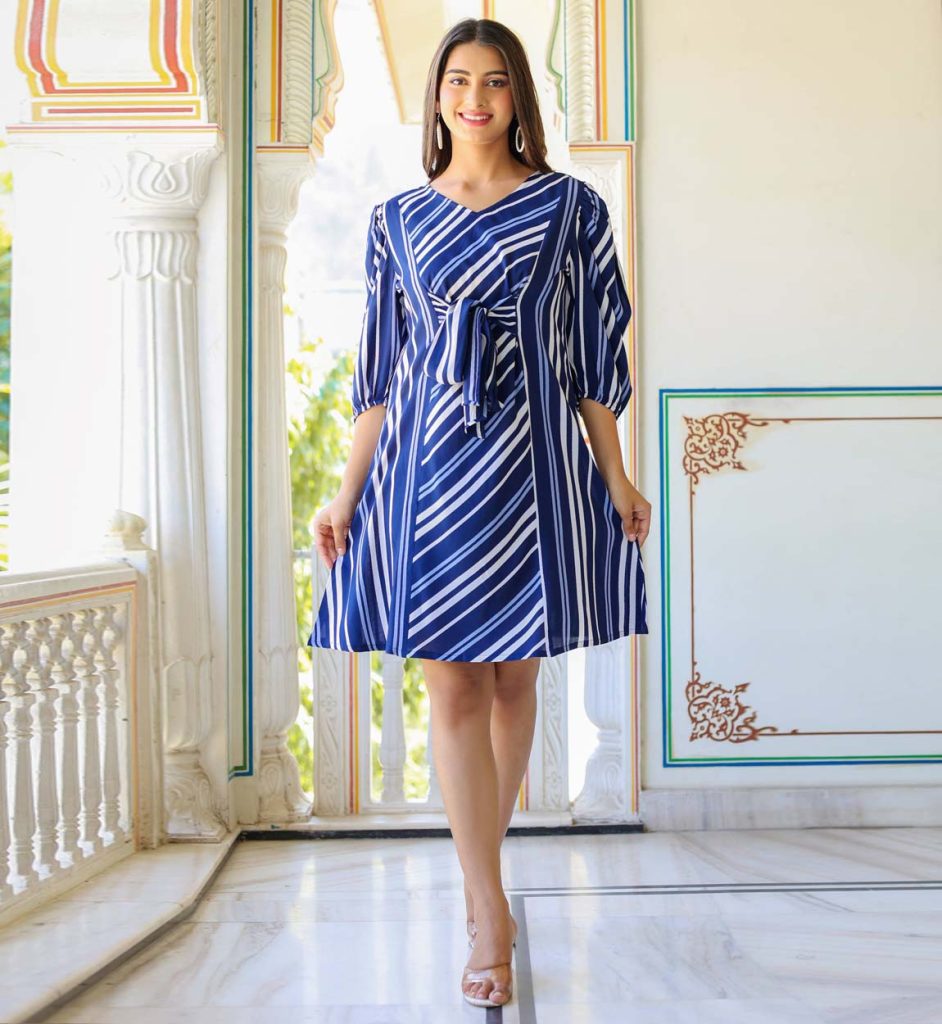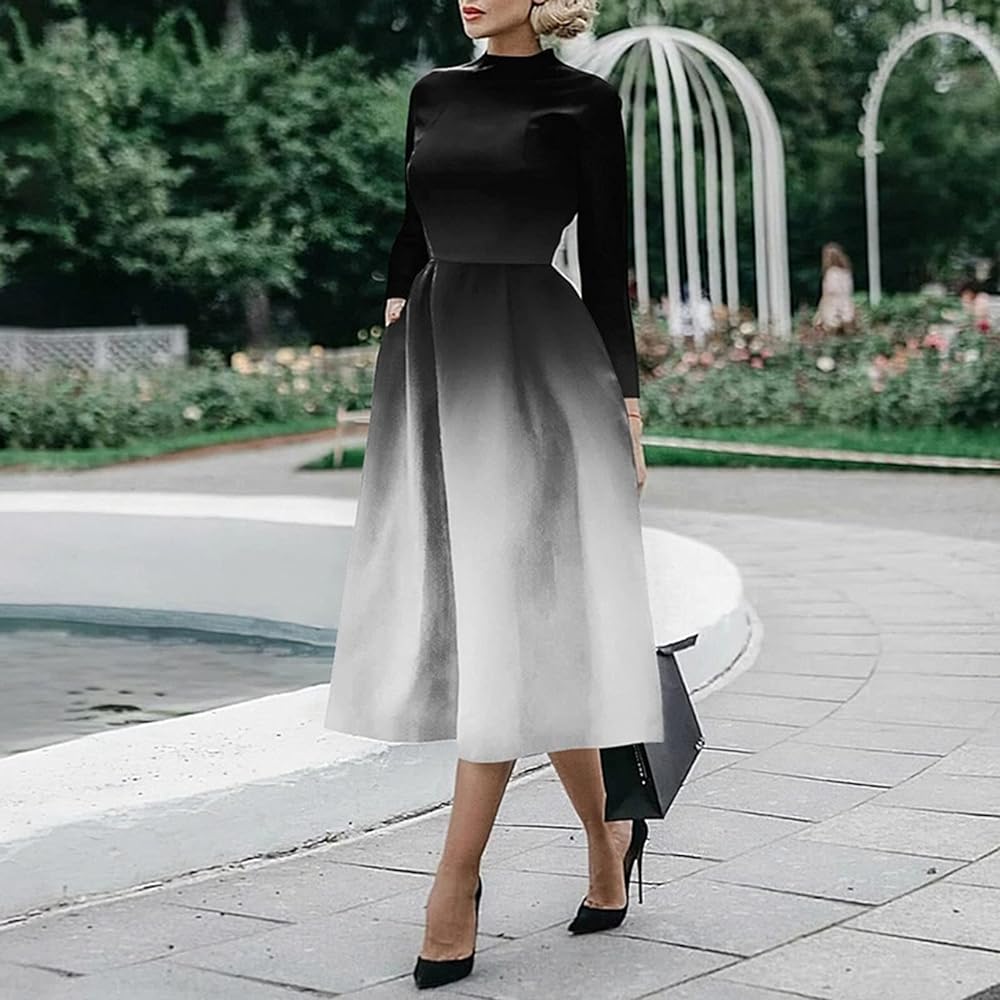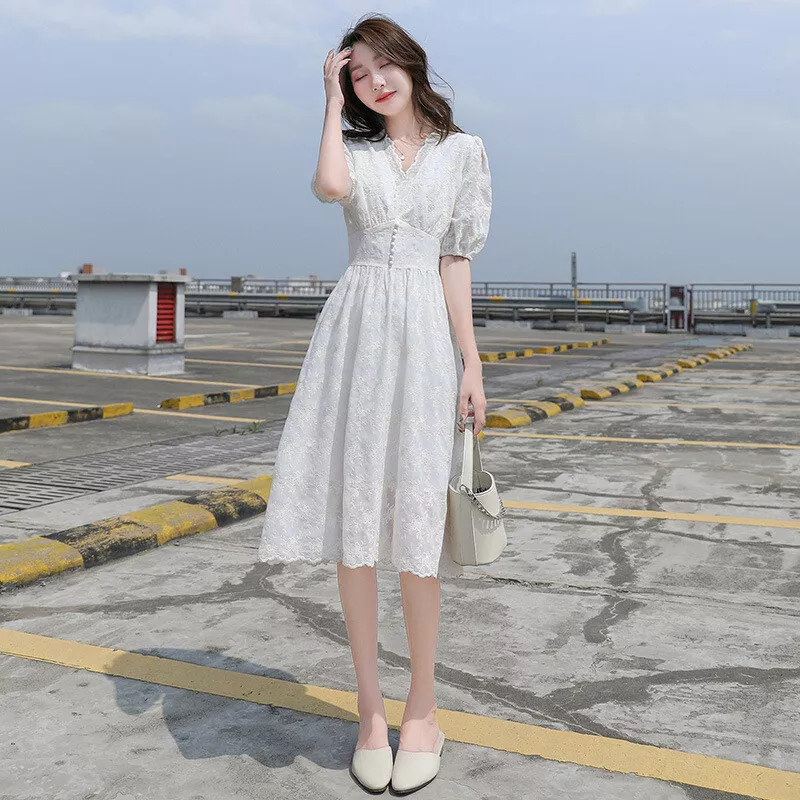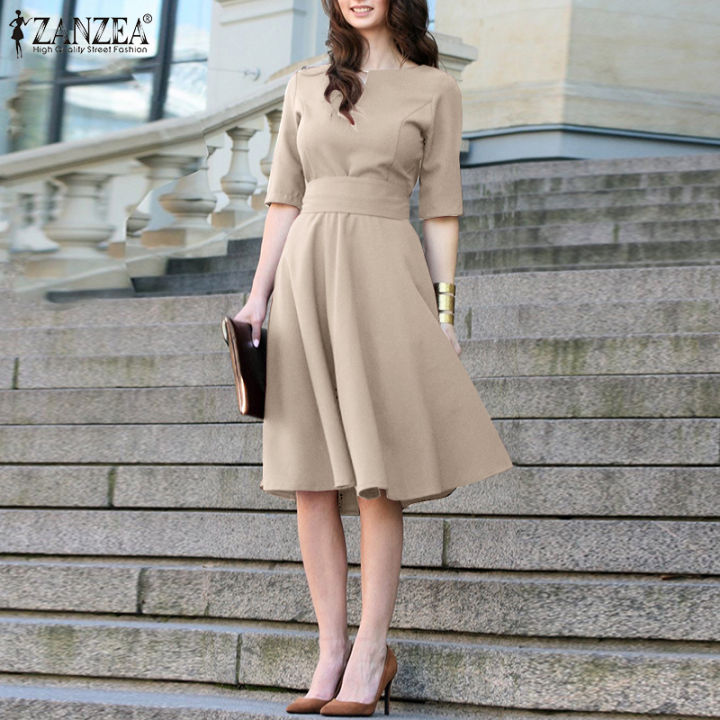Introduction: The Enduring Popularity of the A-Line Dress
The A-line dress, characterized by its flared silhouette which resembles the letter “A,” has been a prominent fashion statement since its conception. With its cinched waist and gradually widening hem, the dress flatters a multitude of body shapes and sizes, making it an inclusive attire choice for women everywhere. The simplicity of its cut allows for versatility in design, fabric, and embellishment. Ensuring that the A-line dress remains a classic piece that can be reinvented for any fashion era or occasion.
Historical Origins and Evolution
The Birth of the A-Line Silhouette
The A-line silhouette traces its fashion roots back to Christian Dior’s “A-Line” collection of Spring 1955, which introduced dresses flowing out from the shoulders or cinching at the waist to create a smooth, sleek line that flared at the hem. The style was a departure from the fitted, hourglass looks of the time, offering a new form of sophistication and ease. Over the decades, the A-line dress has evolved yet stayed true to its original structure, becoming an enduring icon in the fashion world.

Transition Across the Decades
As fashion trends fluctuated through the 1960s and beyond, the A-line dress adapted to reflect current tastes while maintaining its core design. In the swinging ’60s, A-line dresses in bold prints and colors became the rage, often adorned with playful collars and cuffs. The ’70s brought longer lengths and fluid fabrics into play. Throughout the ’80s and ’90s, the A-line dress continued to be a wardrobe favorite, updated with various textures and details. Today, it remains a versatile garment, equally at home in casual, work, and formal settings.
Design Innovations in Modern A-Line Dresses
Embracing Contemporary Aesthetics
In modern fashion, the A-line silhouette continues to be reimagined with contemporary elements. Designers integrate current trends such as asymmetrical necklines, off-shoulder sleeves, and cut-out details into the traditional A-line shape. The incorporation of modern textiles. Such as lightweight synthetics and stretch fabrics, adds comfort and expands the setting in which the midi dress can be worn, from casual brunches to upscale dinners.

Fusion with Diverse Fashion Cultures
The A-line dress’s universal appeal has allowed it to seamlessly blend with diverse fashion cultures around the globe. It is readily adapted into various cultural garments, reflecting regional embroideries, prints, and textiles, thus undergoing a constant process of reinvention. This fusion not only keeps the A-line style relevant but also celebrates global diversity within fashion. Incorporating elements such as African wax prints, Indian silks, or Scandinavian minimalism.
The Role of Color and Pattern
The A-line dress serves as a perfect canvas for a variety of colors and patterns. Whether it’s the bold geometrics of modern art-inspired prints or the subtle elegance of pastel hues. The shape of the dress complements every design choice. This versatility enables designers and wearers alike to experiment with the dress’s aesthetic, tailoring it to personal styles or seasonal color palettes. Reinforcing the A-line dress as a beloved and adaptable fashion selection.

How to Style an A-Line Dress
Accessorizing the A-Line Dress
The simplicity of the A-line dress makes it a perfect match for a wide array of accessories. From statement jewelry to demure belts that emphasize the waistline, accessorizing can significantly alter the dress’s look. For a sophisticated ensemble, a clutch and a pair of stilettos can enhance the dress’s innate elegance. Alternatively, for a casual approach, sneakers and a cross-body bag will underscore the women dress‘s versatility.
Layering Options for Versatility
Layering can extend the functionality of the A-line dress through seasons. A cropped jacket can add an edgy vibe while providing warmth, making the dress suitable for cooler temperatures. Pairing with a fitted turtleneck or leggings can transition the outfit to fall or winter wear. The dress’s shape allows for comfortable layering without adding bulk, ensuring the silhouette remains chic and distinct.
Choosing the Right Footwear
Footwear can dramatically affect the overall presentation of an A-line dress. Choosing a pair of knee-high boots can give an autumnal flair to the outfit. While strappy sandals can present a summer-ready look. The A-line dress’s versatility in pairing with footwear ranging from elegant heels for a formal event to flats or sneakers for everyday wear highlights the design’s adaptability to suit various occasions and styles.
The Role of the A-Line Dress in Formal Wear
Elegance in Special Occasions
The A-line dress has a special place in the realm of formal wear. Its universally flattering silhouette makes it a favored choice for occasions such as weddings, galas, and evening functions. Luxurious fabrics like silk, satin, or lace, alongside details such as beading or sequins, elevate the simple. A-line dress to an exquisite level of refinement. Designers often incorporate longer hemlines and structured bodices for such events, creating ensembles that exude grace and poise. The cut’s ability to balance proportion and highlight an individual’s best features while providing ease of movement makes it an ideal choice for the sophisticated attendee seeking both comfort and glamour at their next formal gathering.

The Bridal A-Line Dress
Many brides choose A-line dresses for their wedding day, valued for their timeless beauty and the way they accommodate nearly all body types. Bridal A-line dresses may feature intricate lace, layers of tulle, or even delicate embroidery, capturing the romantic essence of the occasion. With the option to go sleeveless, have a deep V-neck for a touch of allure, or a high neckline for modesty. The adaptability of the A-line cut ensures that a bride can feel confident and radiant on her special day.
A-Line Dresses Across Cultures and Sizes
Celebrating Cultural Heritage
The A-line silhouette is not limited to Western fashion; it has been embraced by various cultures, each infusing it with their unique aesthetic. For example, the cheongsam, with its high collar and side slits, can be adapted into an A-line form, marrying traditional Chinese elements with a universally flattering shape. In India, the A-line kurta has become a wardrobe staple, often paired with leggings or jeans. Proving the silhouette’s adaptability and cross-cultural appeal.
Inclusivity in Fashion
In contemporary fashion, inclusivity is key, and the A-line dress takes center stage in championing this. Designers and brands are expanding their size ranges to cater to women of all shapes, recognizing that beauty is not size-dependent. By offering a variety of sizes and considering the diverse needs of women’s bodies. The A-line dress remains a favorite for its ability to accentuate the positive while providing comfort and style across the entire size spectrum.

The Future of the A-Line Dress in Fashion
A-Line Dresses in Everyday Wardrobes
The future of the A-line dress looks promising as it continues to be reimagined for daily wear. With casual fabrics like cotton and jersey, the A-line dress becomes an effortless staple for errands, work, or socializing. Its elegant simplicity means it will never go out of style. Remaining a reliable go-to item for those days when one wants to look put together with minimal effort. This enduring appeal suggests that the A-line dress will maintain its place as a cornerstone of functional, chic dressing for years to come.


